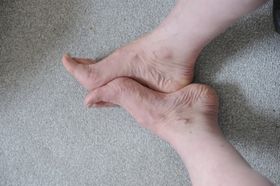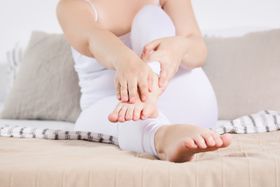Upstep Answers
Our team answers your questions about the causes and treatment of various podiatric conditions, including plantar fasciitis, flat feet, foot pain, and the use of custom orthotics.
Recent Answers
Best Work Boot Inserts for Those With Plantar Fasciitis
Workers in many industries globally spend many hours on their feet during the day and are required to wear shoes that are hardy and protective. Work boots worn by many prevent any potential injuries f
Asked 2 years ago
Can You Treat Fat Pad Atrophy With Orthotics?
Fat pads are closely packed fatty tissues found in specific areas of the body. They protect the foot's bones, tendons, ligaments, blood vessels, and nerves by absorbing force and pressure. Over time,
Asked 2 years ago
What Are the Pros and Cons of Using Memory Foam Orthotics?
Memory foam orthotics are widely used nowadays for providing sheer comfort on the feet. It is basically a type of insole that is made from pliable materials like polyurethane, the same type of materia
Asked 2 years ago
Can Memory Foam Insoles Cause Plantar Fasciitis?
Memory foam insoles seem like a great idea when you first purchase them as there are few materials that could match them in comfort. Especially if you suffer from some form of foot or heel pain, the e
Asked 2 years ago
Should You Wear Orthotic Insoles for Flat Feet While Weightlifting?
Lifting weight with flat feet could negatively affect your performance in the gym. Wearing proper insoles can be an ideal solution, and it can be useful for your foot's health. Flat Feet and Weightli
Asked 2 years ago
Related Articles

Collapsed Arches vs. Flat Feet: How to Tell the Difference
Babafemi Adebajo
December 17, 2024

Can Arch Support Treat Bunions?
Janik Sundstrom
February 1, 2024

Corns vs. Bunions: Similarities and Differences
Janik Sundstrom
January 30, 2024

7 Best Insoles for Treating Plantar Fasciitis-Related Calf Pain
Janik Sundstrom
May 20, 2025

Best Insoles For Sandals
Janik Sundstrom
May 14, 2025
Recent Posts
Babafemi Adebajo
Persistent Shin Splints: Why Won’t They Go Away?
Babafemi Adebajo
Vitamins for Shin Splints: Choose the Right Supplements
Babafemi Adebajo
7 Best Orthotics to Aid With Your Lower Back Pain
Babafemi Adebajo
Best Insoles for Plantar Fibroma
Babafemi Adebajo
Out-Toeing—Symptoms, Causes, and Treatments
Janik Sundstrom
The Benefits of Taping for Cuboid Syndrome Treatment
Janik Sundstrom
5 Effective Home Remedies for Burning Feet Syndrome
Babafemi Adebajo



